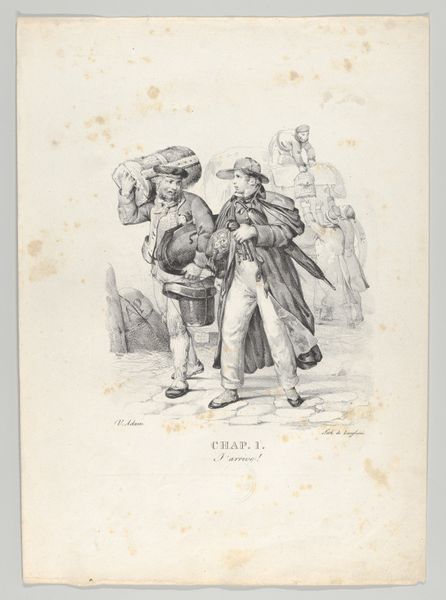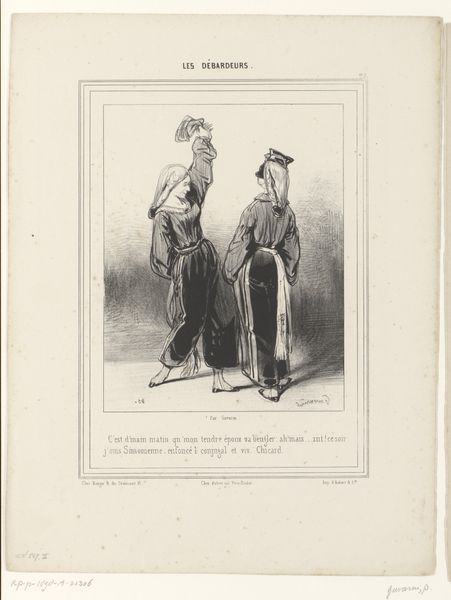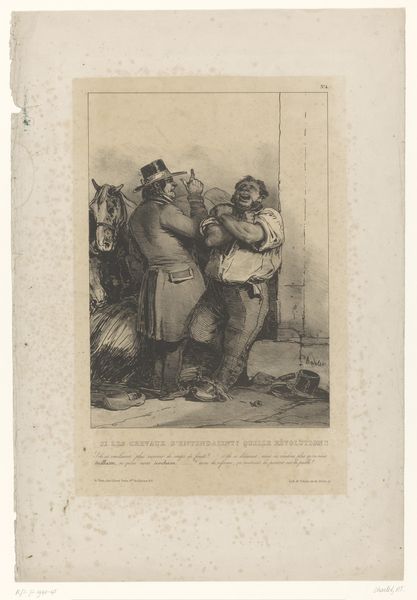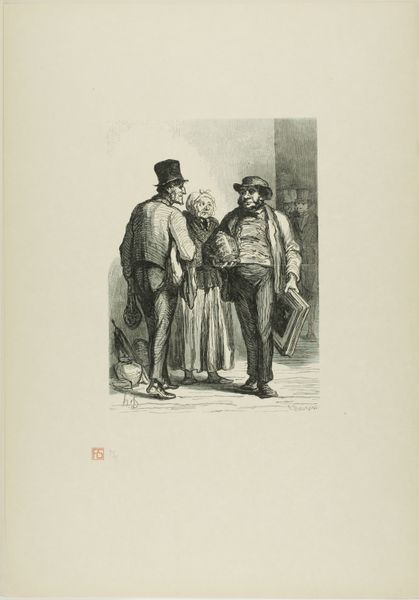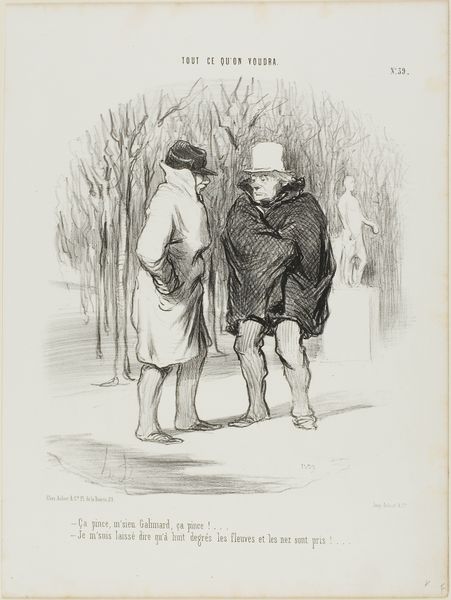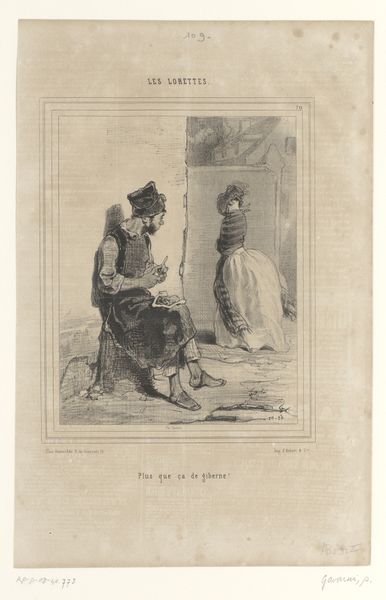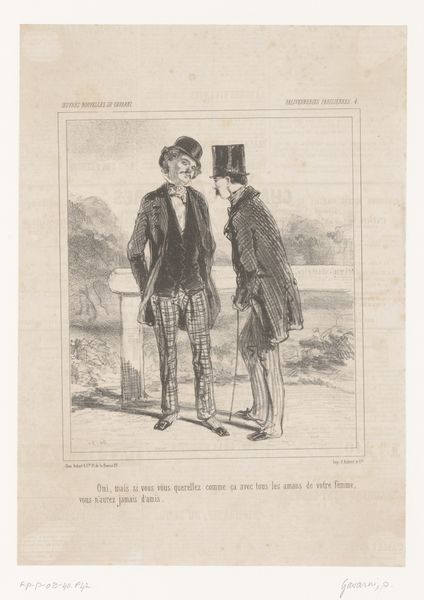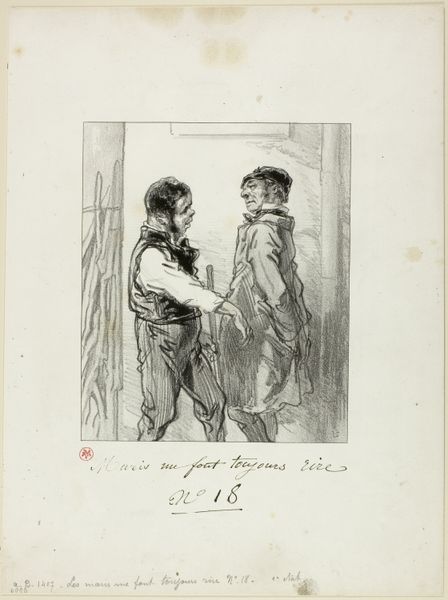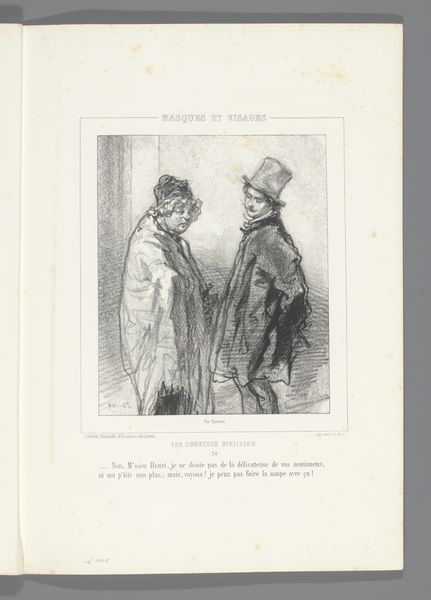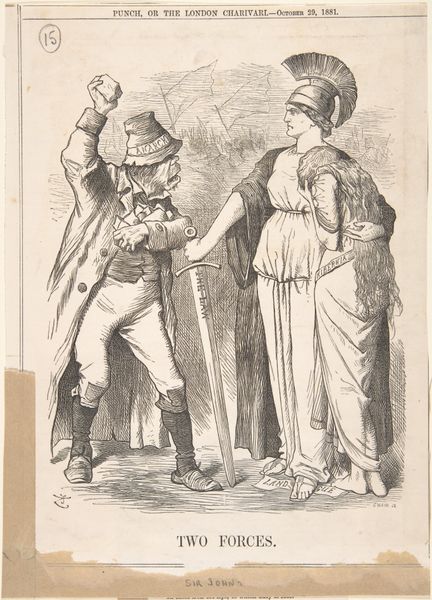
Sans profession, from the series Bohèmes, Masques et Visages 1804 - 1866
0:00
0:00
drawing, lithograph, print
#
portrait
#
drawing
#
lithograph
# print
#
romanticism
#
men
#
genre-painting
Dimensions: sheet: 13 9/16 x 9 7/16 in. (34.5 x 24 cm)
Copyright: Public Domain
Editor: Here we have Paul Gavarni’s “Sans profession, from the series Bohèmes, Masques et Visages,” a lithograph from sometime between 1804 and 1866. I'm really struck by how textured the lines are and, honestly, the somewhat dejected mood of these figures. What can you tell me about this piece? Curator: Well, consider the very material conditions of its production. It’s a lithograph, which allowed for relatively mass production and distribution compared to other printmaking techniques of the time. How does the reproductive quality of this print, its existence as a multiple, inform our understanding of the 'bohemian' subject Gavarni depicts? Editor: That’s interesting. So, the material process makes it more accessible...does that challenge traditional high/low art boundaries in any way? Curator: Precisely. Gavarni’s choice of lithography allows him to circulate images of the working class or "bohemians" more widely, almost democratizing the viewing of those usually marginalized. This challenges notions of who art is *for*. Furthermore, think about the paper it’s printed on. Is it fine art paper, or something more commonplace? What does that materiality suggest about the intended audience and the perceived value of the subject matter? Editor: So, by using more common materials, the work itself speaks to the common person, about common people? Curator: Exactly! And isn’t there something also potentially subversive in taking subjects of labor—or the *lack* thereof, given the title—and mass-producing their image? This isn't just an aesthetic representation; it's a statement about visibility, class, and the very nature of artistic production and consumption. Editor: I never considered how the physical production process could so strongly shape the reading of an image, especially with its relationship to societal structure. Thank you for opening my eyes to that. Curator: And thank you. Reflecting on the means of artistic creation adds another important dimension of understanding to Gavarni’s art.
Comments
No comments
Be the first to comment and join the conversation on the ultimate creative platform.
